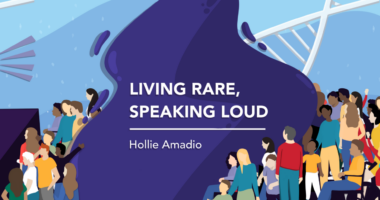EU panel recommends Takhzyro for children as young as 2
Another ruling could expand current indication that covers patients 12 and older

The Committee for Medicinal Products for Human Use (CHMP), an arm of the European Medicines Agency, has recommended the approval of Takhzyro (lanadelumab) for the routine prevention of hereditary angioedema (HAE) attacks in children starting at age 2.
Based on a positive opinion from the CHMP, the European Commission will decide on possibly expanding Takhzyro’s current indication, covering patients 12 and older, in the coming months. If approved, it will be the first preventive, or prophylactic, HAE treatment for those younger than 6.
“We are so pleased to achieve this positive step towards providing the first long-term prophylactic treatment option to prevent attacks in this vulnerable population,” Didier Relin, head of international regulatory at Takeda, the therapy’s developer, said in a press release.
Earlier this year, a similar label expansion was approved by the U.S. Food and Drug Administration.
In HAE, excessive production of the bradykinin protein triggers swelling attacks in the deeper layers of the skin or the mucosal lining of the respiratory and digestive tracts. These attacks can happen very early in childhood, and life-threatening attacks in the upper airways have been reported in HAE patients as young as 3.
Takhzyro is antibody-based therapy designed to block the activity of kallikrein, a protein that regulates bradykinin levels, thereby reducing the levels of bradykinin and associated attacks.
Administered through under-the-skin injections, the therapy has been available in Europe since 2018 for the routine prevention of HAE swelling attacks in adults and adolescents, 12 and older.
For this age group, the treatment is recommended to start at a 300 mg dose given every two weeks — a frequency that may be reduced to once every four weeks for patients who remain attack-free.
SPRING trial supported CHMP recommendation
The CHMP’s positive opinion was supported by findings from the Phase 3 SPRING clinical trial (NCT04070326) which enrolled 21 children with HAE, ages 2 to 11. All were treated with Takhzyro for up to one year, with dosing based on their age: children ages 2-5 received 150 mg every four weeks, while older children started at 150 mg every two weeks.
The 17 children in the older age group could reduce the dosing to once monthly if their attacks were well-controlled, which occurred in seven of them after the first six months of treatment.
Results indicated that after one year of treatment, 16 children (76.2%) were completely free of HAE swelling attacks. The therapy reduced the rate of attacks by 94.8%, from a mean of 1.84 to 0.08 attacks per month.
Moreover, patients were free from attacks 99.5% of the days on average, and the degree of attack reduction was similar in all dose regimens.
Takhzyro side effects relatively minor
Takhzyro also was generally tolerated well by these young patients, with one-third of the reported side effects being injection site reactions, such as pain (29%), redness (14%), and swelling (5%).
The findings in this younger group of patients were consistent with those of the Phase 3 HELP trial (NCT02586805) that tested Takhzyro in 125 people, ages 12 and older, with HAE. HELP results supported the therapy’s first approval for this patient population.
“We know that HAE can be a complex, debilitating condition, and we are committed to being a champion for all individuals living with HAE,” Relin said.







